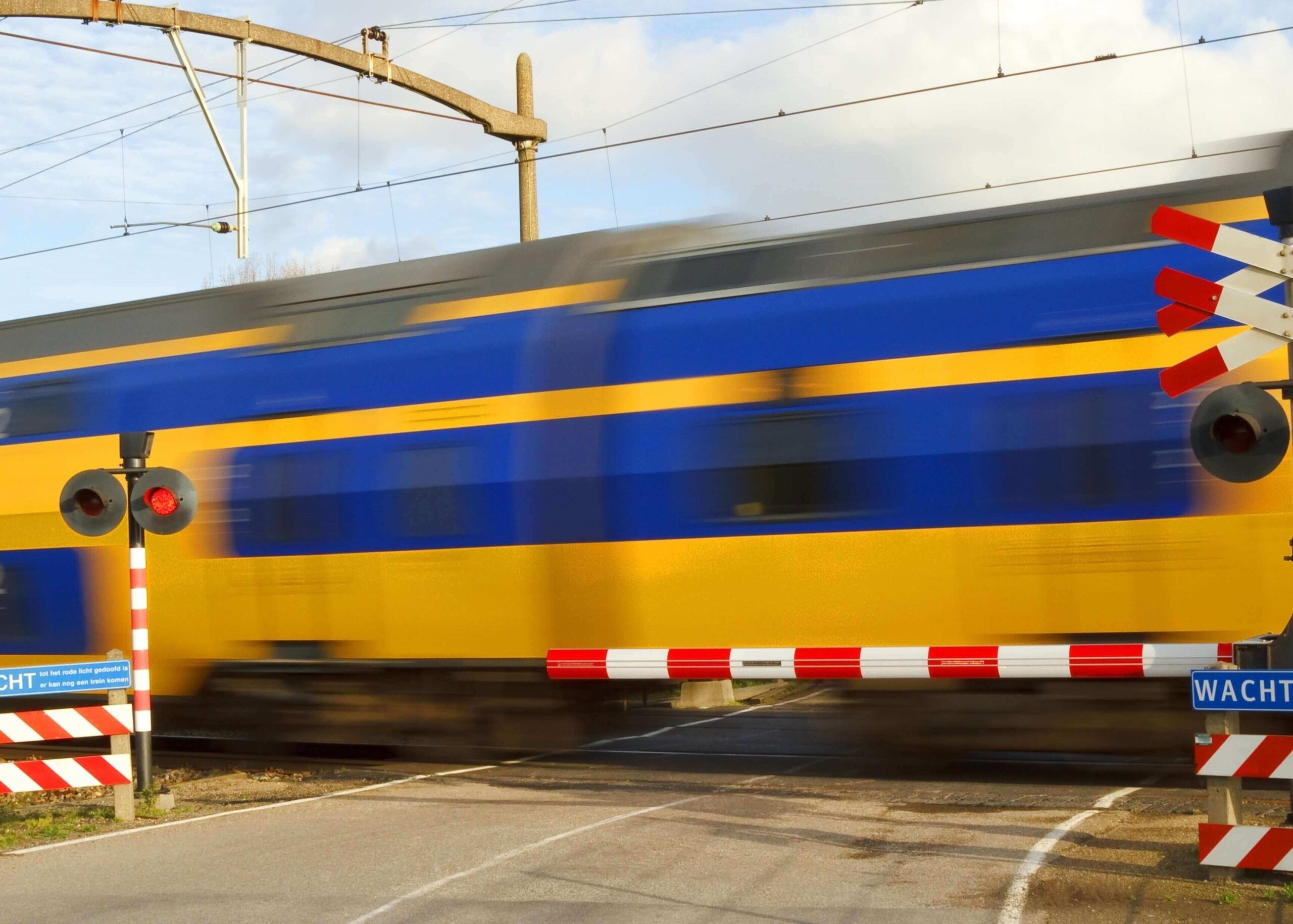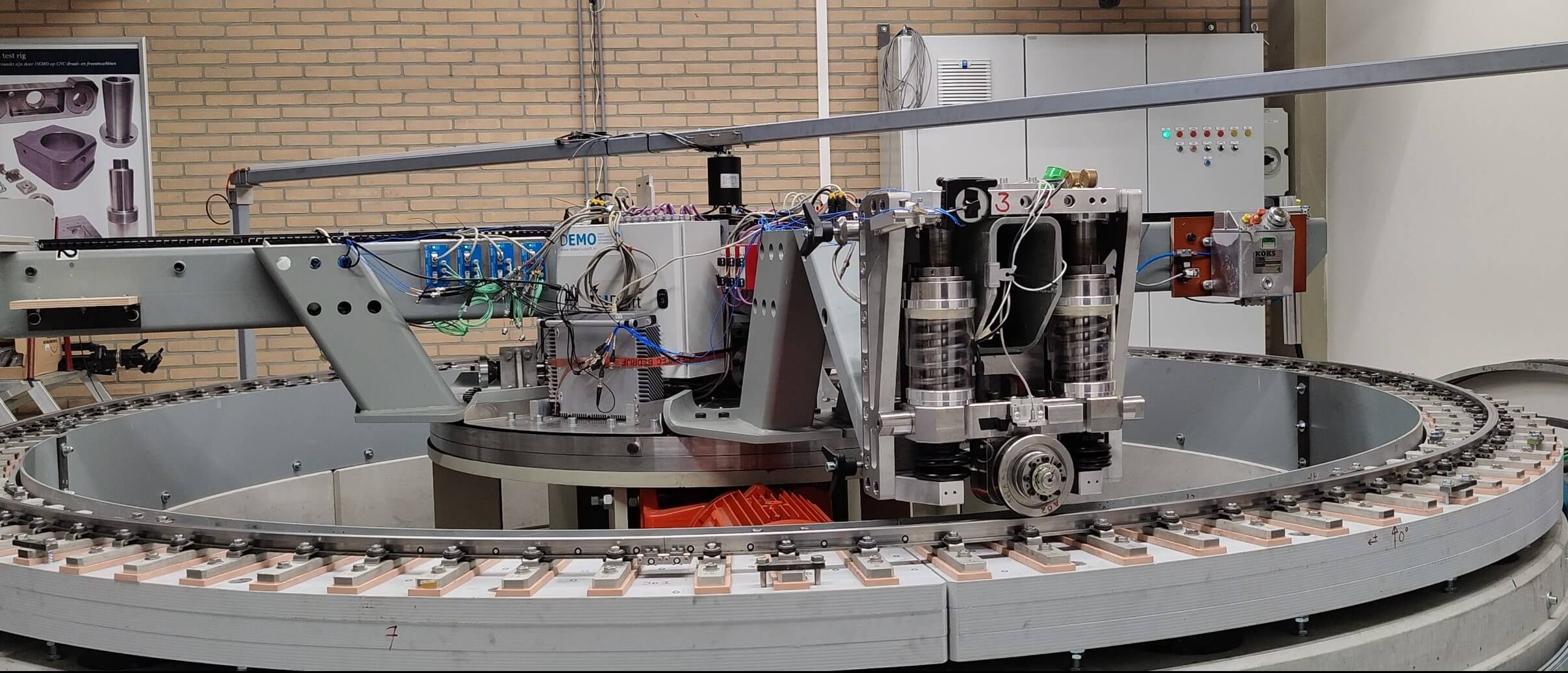Project Description
Key information
Project in the Spotlight: S16041
Market: Advanced Metals
Written M2i Program Manager: Viktoria Savran
Background
The modern railway industry faces many challenges related to the increase of operational speeds coupled with the continuous increase in axle loads exerted by modern trains. Among these challenges, rolling contact fatigue (RCF) emerges as a major concern due to its significant effects on the service life of rails. RCF can initiate cracks within the rail, potentially leading to catastrophic rail fractures, posing serious safety risks and operational disruptions.
Historically, grinding has been the go-to method for mitigating the detrimental effects of RCF, aiming to prolong the service life of railway rails. By altering the loading conditions at the wheel-rail interface, grinding can effectively reduce contact stress, and, through the implementation of an anti-head check profile, can directly address the signs of RCF. Additionally, grinding serves as a preventive measure, removing emerging cracks in the rail surface to stop their progression into more severe structural damage.
However, the solution that grinding presents is not without its limitations. Recent observations have raised concerns about phenomena such as the white etching layer (WEL), which are suspected to be intricately linked not only to RCF but also to the grinding process itself. WEL, characterized by a martensitic layer formed on the rail due to high temperatures from wheel slippage or braking followed by rapid cooling, represents a complex phenomenon. The intricate relationship between WEL, RCF, and grinding processes remains poorly understood making development of effective maintenance strategies difficult.
Research Goal and Highlights
The MaxLife project aimed to develop a comprehensive framework for understanding the initiation and growth of cracks in railway rails, considering diverse microstructural features and loading conditions. It focused on the observation and analysis of crack development through experimental and numerical methods, particularly examining head checks under realistic conditions. A pivotal goal was to formulate predictive models that express crack development rates as functions of stress states, enabling more effective rail maintenance strategies.
The project’s key achievements include the development of a novel finite element model for simulating rail ratcheting behavior, investigations into the initiation mechanisms of head checks, and the comprehensive characterization and comparison of different rail steel grades. These highlights represent significant effort in addressing rolling contact fatigue understanding.
New FE Model for Ratcheting Simulation: A novel finite element (FE) procedure was developed to accurately model the ratcheting behavior in rails, enhancing our understanding of the stress-strain states under cyclic loading. This model’s precision in simulating both surface and subsurface stresses represents a step forward in predicting RCF’s.
Experimental and Numerical Investigation into Head Checks: Through the V-Track test rig (see figure below), the project replicated critical real-life wheel-rail contact conditions, leading to the formation of head checks. This approach, combined with microscopic analysis, established a strong correlation between the ratcheting within the running band and surface shear stress, offering new insights into crack initiation mechanisms.
Characterization of Rail Steels: The project conducted comprehensive studies on different rail steel grades (pearlitic R220 and R260MN, and bainitic B320) to understand their mechanical hardening and ratcheting properties. The findings indicated the superior mechanical strengths of the bainitic B320 steel and its weaker ratcheting response, crucial information for selecting rail materials.
Validation of Ratcheting Simulation: The FE model was validated through experimental data from V-Track rig tests. This validation underscores the model’s capability in simulating the complex interplay between material and structural ratcheting effects, contributing significantly to the body of knowledge on RCF.
The MaxLife project’s comprehensive approach, from framework development to in-depth experimental and numerical analysis, has set a new standard in the understanding and management of RCF in railway rails. By achieving its objectives, the project not only advances scientific knowledge in the field but also offers practical insights and tools for the railway industry to enhance rail durability and safety.
Future Directions
The conclusions of the MaxLife project mark the beginning of a new chapter in rail infrastructure research and development. Future efforts will focus on expanding the scope of material tests to include bi-axial loading conditions, further exploring constitutive models for a deeper understanding of rail steel behavior under stress. Additionally, the project has laid the groundwork for more complex simulations of wheel-rail contact profiles, aiming to closely replicate real-world conditions and thereby enhance the predictability and effectiveness of rail maintenance strategies. These directions promise to further the industry’s ability to mitigate rolling contact fatigue, ensuring safer and more reliable rail systems worldwide.
The project got NWO-TTW funding in 2018-2023 under project number 15796 (M2i project number S16041B). The core of the project activities were carried out by PhD researcher Fang Rem in collaboration with PosDoctoral researcher Omid Hajizad under the supervision of Prof. Zili Li (Chair of Rail Systems and Monitoring at TU Delft).
 Ivan Shevtsov (ProRail)
Ivan Shevtsov (ProRail)
“RCF defects have been a big problem for us for a long time. The MaxLife project, in collaboration with TU Delft, has allowed us to make significant steps in understanding fundamental acpects of RCF, however, numerous questions remain still unanswered, underlining the complexity of RCF and its impact on rail durability and safety. Given the progress we’ve achieved and the potential for deeper insights, ProRail is eager to continue our partnership with TU Delft, exploring new research paths and further advancing our strategies to tackle RCF defects in our track.”
Zili Li (TU Delft)
“Collaborating with an industrial partner like ProRail on real-life challenges such as RCF is immensely rewarding. It offers a unique opportunity to apply our theoretical research to practical problems, providing solutions that have a tangible impact on railway safety and efficiency. For me, this partnership is a testament to the power of combining academic insights with industry expertise to tackle complex issues. It’s not just about advancing academic knowledge; it’s about making a real difference in the world of railway operations”.
 Fang Ren (PhD research TU Delft)
Fang Ren (PhD research TU Delft)
“Working on the MaxLife project has been an incredible journey of learning and discovery. It gave me the chance to apply my research to a real-world problem that affects millions of people every day. Through this project, I’ve gained invaluable insights that have significantly prepared me for my future career. The collaboration with the industry has not only enriched my research experience but also equipped me with a practical understanding and skills that pave the way for a seamless transition into the industry sector.”



